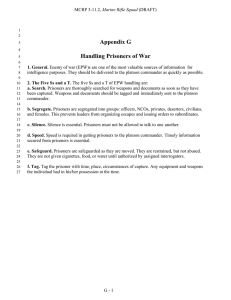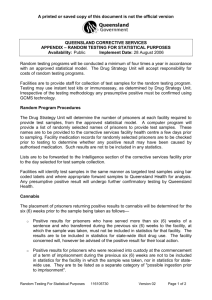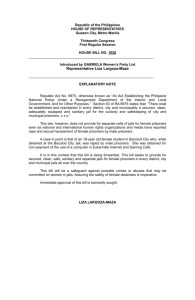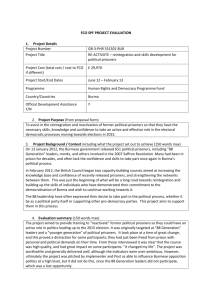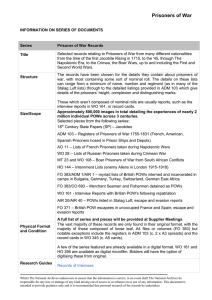Promoting Positive Attitudes Towards Mathematics and Improving
advertisement
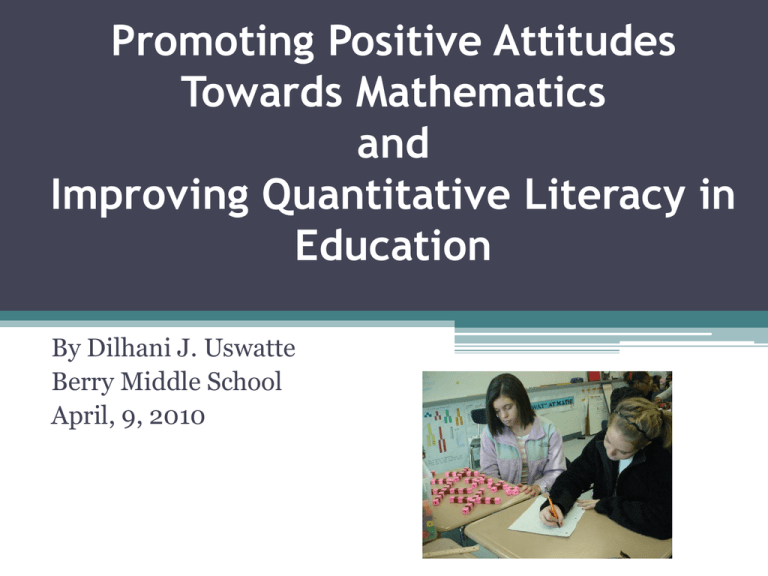
Promoting Positive Attitudes Towards Mathematics and Improving Quantitative Literacy in Education By Dilhani J. Uswatte Berry Middle School April, 9, 2010 What do the following have in common? • • • • Eating your vegetables Exercising Doing your taxes Math “Fun theory”, anyone? Imagine if… • • • • • Kids enjoyed math and wanted to do it They “got it” Students were persistent problem solvers Students could find multiple solutions Kids did not complain about writing in math …come to Rm 113 at Berry My objectives: • Build positive attitude toward math • Allow students to see they can “get it” • Make students believe we are mathematicians who find multiple solutions, celebrate our mistakes, and can create new problem • Encourage them to pursue math at a higher level • Prepare students for an uncertain “21st century” At the beginning of this year President Obama pledged to improve American students’ performance in math and science. “Make no mistake: Our future is on the line,” he said. “The nation that out-educates us today is going to outcompete us tomorrow.” Each day the importance of educating the American People only grows. With a struggling economy and jobs increasingly moving overseas–improving our children’s math and science education is crucial to maintaining our competitive role in the world economy. The 21st century learner must have the following skills (Wagner 2008): • • • • • • • Critical thinking and problem solving skills Collaboration and Leadership Agility and Adaptability Initiative and Entrepreneurialism Effective Oral and Written Communication Access and Analyze Information Curiosity and Imagination General teaching strategies: • Work in groups • Take turns being leader, learner, listener, facilitator (e.x. homework analysis) • Be open to suggestions ( See “can” and exit slips) • Build on existing knowledge and use real-world problems ( see student work BEFORE linear equations were taught) Promote technology and creativity • Example of student work that connect math to real-life Incorporate movement • See examples from “Valentine’s Day Math Fair”developed by math student leaders Encourage making deeper, multiple connections ( GBMP): • Use open-ended pattern problems • “ The ability to recognize patterns is the key to mathematical thinking. Patterns are basic to the understanding of all concepts in mathematics. Searching for patterns is a way of thinking that is essential for making generalizations, seeing relationships, and understanding the logic and order of mathematics.” ( Marilyn Burns) “Traditional” pitfalls: • Material not taught in depth • Learner is not encouraged to make connections • Exercises are “mindless”…just follow the examples • Lessons are “rule-based” not “thinking-based” Use multiple representations: • Geometric ( build the next two steps) • Tabular ( create a table of values and look for patterns) • Graph ( plot the data points) • Verbal ( use words to explain the pattern you see) • Algebraic ( Can you develop an equation?) (All types of learners benefit from this approach) The “Jail Cell” problem (a.k.a Cow Pens) • You are to build a minimum security jail cell that will require a different amount of bricks depending on the number of prisoners. Write a construction report that is general enough such that the construction company can build a jail cell for any number of prisoners. 1 person 2 person 3 person 1)Draw the next two steps 2 How many blocks are needed for 10 prisoners? 100 prisoners? Any number ( n) prisoners? 3)Describe the patterns you see in a table and graph 4) Can you develop an algebraic equation? 5) Can you solve the problem another way? 6) What would your construction instruction report say? Am I on the right path? • ARMT scores continually rising ( from 86 to 93% last year) • Student feedback: “I actually like math!” • “ I loved the open-ended questions. They really helped me with making connections and explaining my work more thoroughly.” • “Fun Fridays are so cool. They allow you to go outside the box, break down the barriers of your mind, and explore math and apply it in totally new ways. Mrs. Uswatte rocks ” To improve quantitative literacy, we must: • Set the right attitude and create “buy in” • Continually find ways to make lessons engaging • Relate to real-life and build on natural math skills • Use activities that are open-ended and require students to make deeper connections Words of wisdom from my students: • “Education is food for your mind. If you don’t eat now, you’ll die.” Hunter, age 13 • Education is the training wheels on the bike ride of your career.” Kellan, age 13 ___________________ Then let US provide a nourishing meal and not junk. Let us ensure those training wheels give full support to pursue careers in math/science related jobs. Homework: Exit Slip • If you will, please take a moment to tell me one or some of the following: a) What did you learn today? b) What will you take away from this presentation? c) Do you have any ideas or suggestions you would like to share? Contact Information: Dilhani Uswatte Berry Middle School 4500 Jaguar Drive Hoover, Al 35242 Tel: 205-439-2000 Fax: 205-439-2001 Email:duswatte@hoover.k12.al.us References • Wagner,T. ( 2008). Rigor redefined. Educational Leadership, 66(2), pg.20-25.



